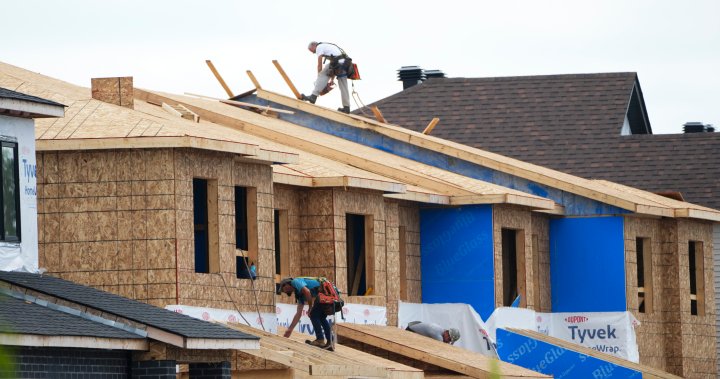As pressure mounts on the federal government to take a more active role in filling the housing supply gap, the minister in charge of the portfolio is exploring new — and potentially old — approaches to getting homes built.
The need to build more homes to accommodate Canada’s growing population has put the federal Liberal government on the defensive in recent weeks, as opposition leader Pierre Poilievre criticizes Justin Trudeau’s government on concerns over unaffordable housing.
The national housing supply is under pressure from record levels of immigration in recent months, and plans to scale up Canada’s current pace of building are facing headwinds from rising interest rates.
One in five builders said they’ve been forced to cancel entire projects in the current environment, according to a report from the Canadian Home Builders Association released last week.
Sean Fraser, the minister newly in charge of the combined housing and infrastructure portfolio, was at the University of British Columbia on Wednesday to announce funding for affordable housing units in the province.
Global News asked Fraser whether the government was considering restoring the Canada Mortgage and Housing Corp.’s (CMHC) former mandate to build homes itself to fill in the gap and restore affordability. The freshly minted housing minister said that was among the “conversations” happening right now in the government.

The CMHC’s origins in 1946 were as a builder of housing in post-World War II era. The Crown corporation shifted away from that role to focus more on funding and research in the 1980s.
Fraser said Wednesday the Liberals are looking to reverse a “complete retreat” from the housing portfolio by successive governments — Liberal and Conservative — over the past few decades.
He said the Liberals began their return to the file with the release of the National Housing Strategy in 2017. But at that time, the government’s programs were focused on supporting low-income and vulnerable individuals to get a roof over their head.
Today’s environment is seeing middle-class Canadian families regularly struggle to afford rental homes or break into the housing market, Fraser said, and Ottawa’s tact will shift accordingly to address those needs.
“As the world changes, so too is our approach going to change,” he said.
“We’re going to continue to develop new programs that will create more space.”
Fraser did not provide details about what new programs could look like, but said the government would work with provinces and municipalities to offer “nuanced solutions” to housing concerns in each community. That could involve incentivizing the construction of new purpose-built rental housing, such as the $500 million in repayable funds to build 1,100 affordable units in B.C. that he announced Wednesday.
Is homebuilding a federal job?
Fraser’s comments appear to show the federal government leaning into its role in addressing housing affordability, an area Ottawa has tried to distance itself from as of late.
The prime minister said recently there are limits to what the federal government can do.
“I’ll be blunt as well: housing isn’t a primary federal responsibility,” Trudeau said during a housing announcement in Hamilton on July 31.
“It’s not something we have direct carriage of. But it is something that we can and must help with.”
Poilievre quickly fired back, reminding people of earlier promises Trudeau had made on housing.
“(Trudeau) held a news conference to tell you all he’s not responsible for housing. That’s funny, because eight years ago, he promised he was going to lower housing costs,” Poilievre said in a news conference the next day.
On Tuesday, Poilievre said he would withhold funding from cities that failed to meet targets for adding stock as part of his housing plan.

Fraser shot back against the proposal on Wednesday, arguing Ottawa ought to spur construction with carrots rather than sticks.
“We can do more to incentivize changes at municipal and provincial levels of government… and we can further incentivize it by having federal funding contribute to the solutions,” he said.
The CMHC warned in 2022 that the country needs to build 5.8 million homes by 2030 to restore affordability.
The national housing agency reported Wednesday that the annual pace of housing starts in July fell 10 per cent compared with June when they posted their strongest showing so far this year.
CMHC said last year that if the current pace of building continues, then only 2.3 million homes will have been added to the housing stock by then.
— with files from The Canadian Press
© 2023 Global News, a division of Corus Entertainment Inc.




